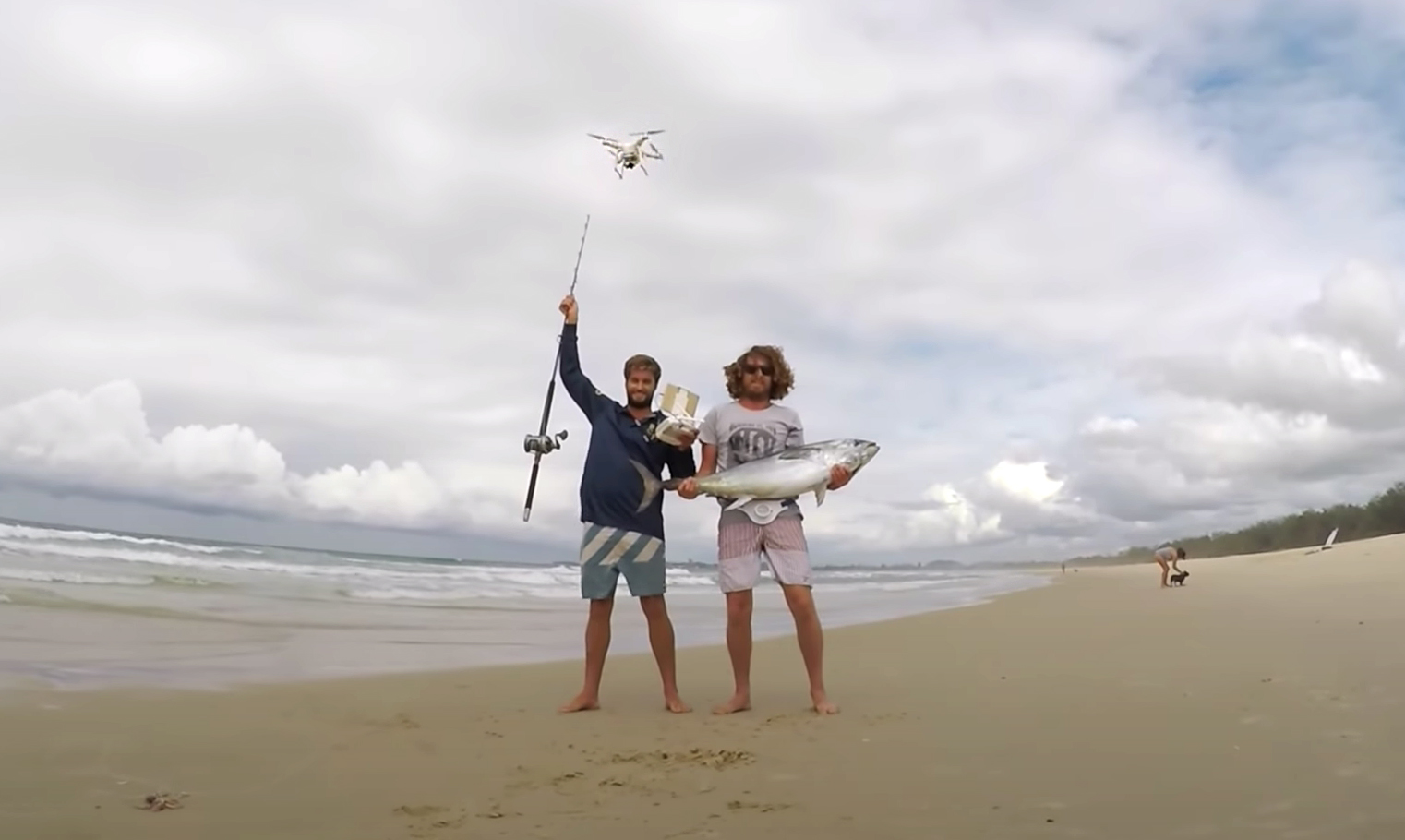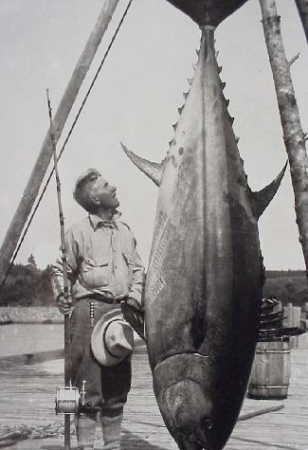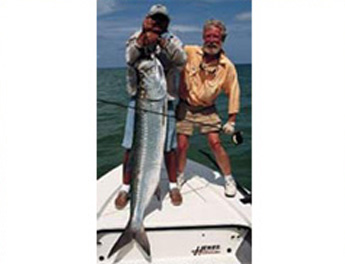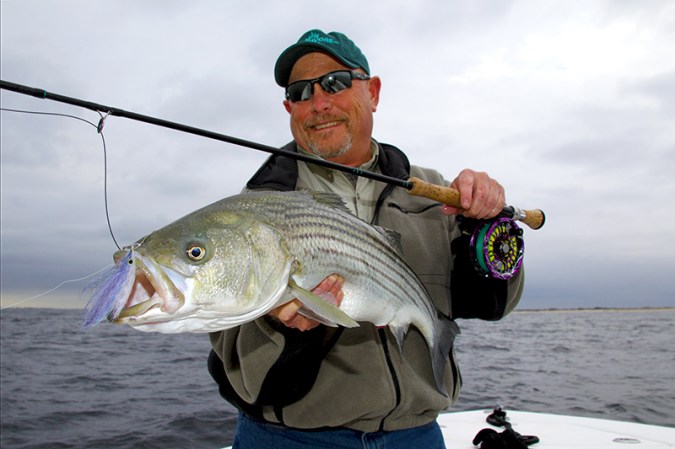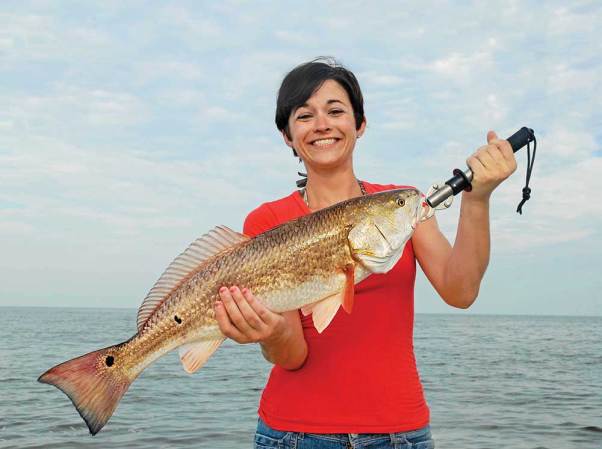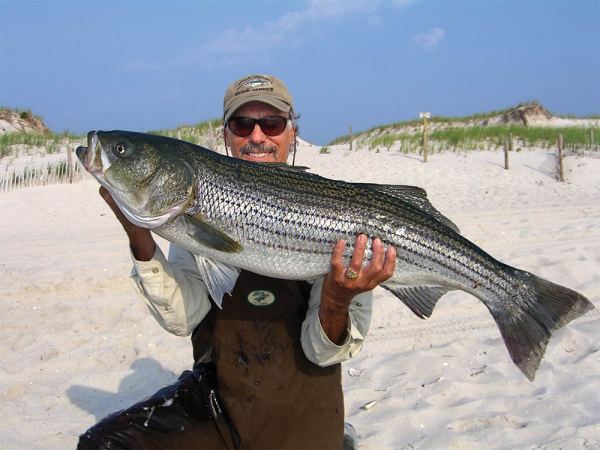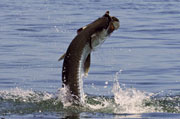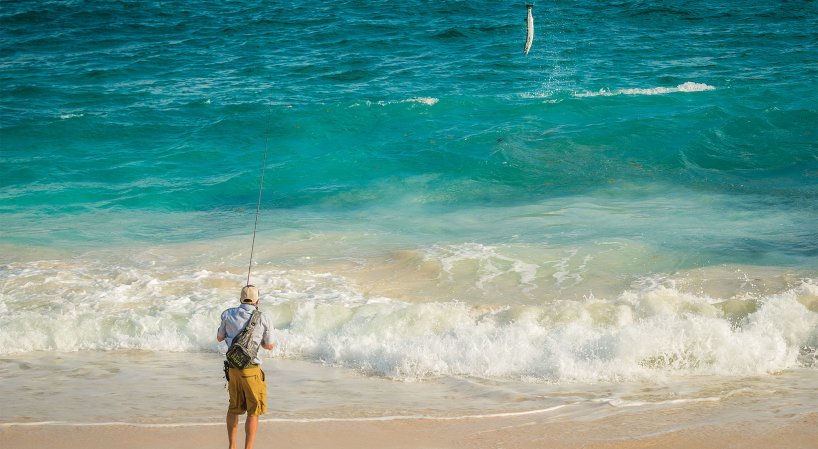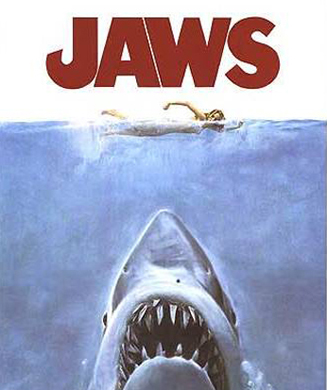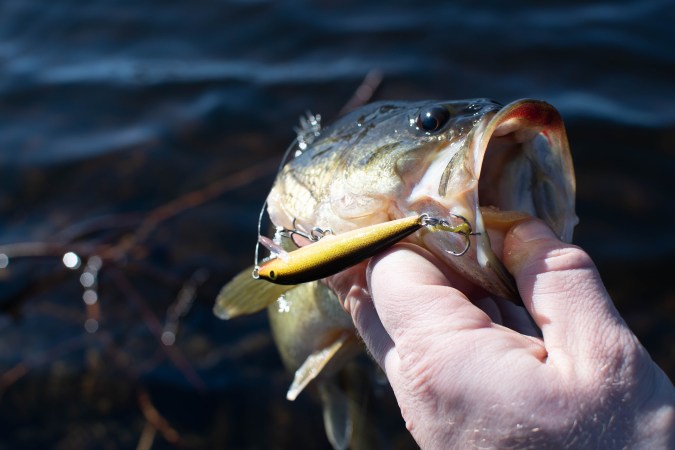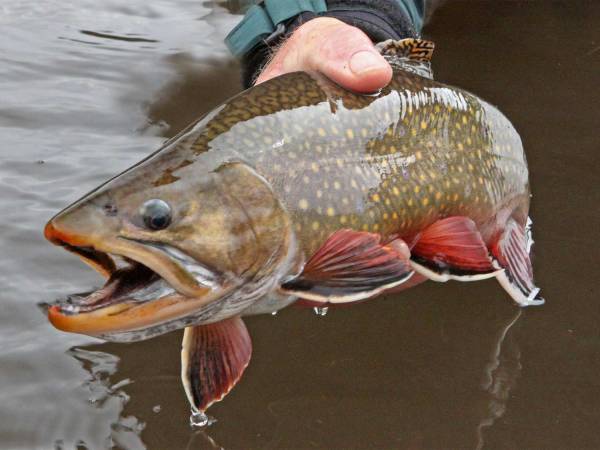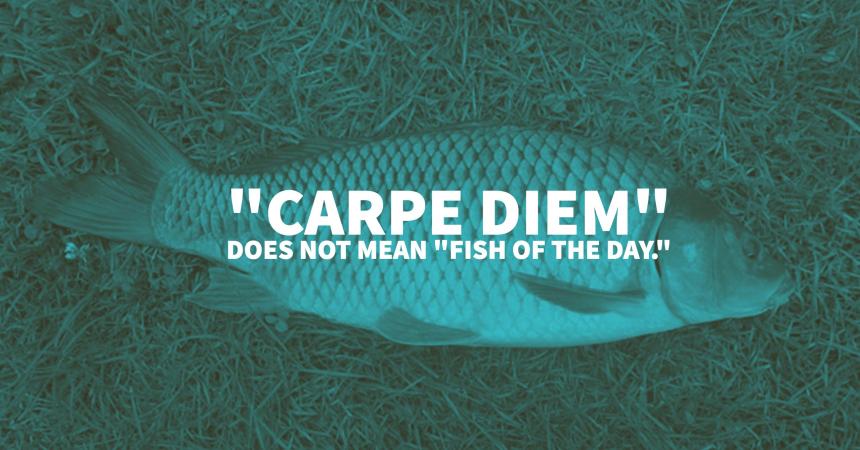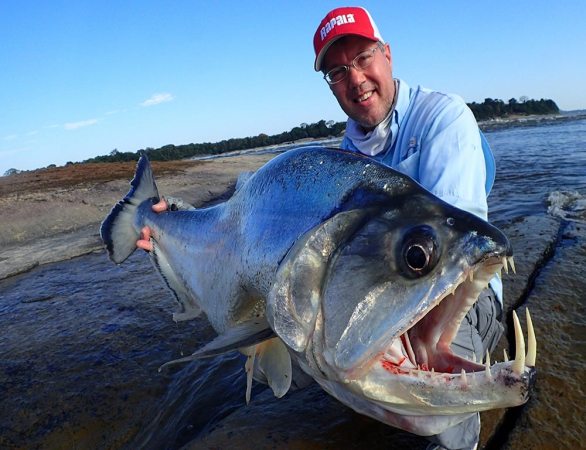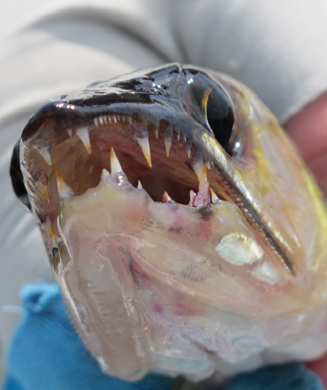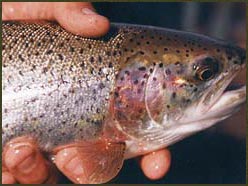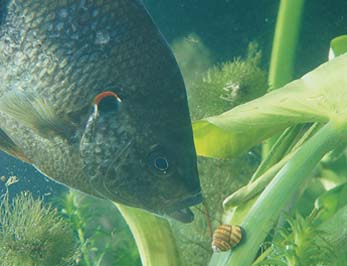A YouTube video featuring a drone, a group of shore anglers, and schools of tuna set the fishing world on fire in 2016. The video, which was filmed in southwestern Australia, shows two anglers rigging a drone with a release to suspend a hook baited with a squid. They walk to the beach, fly out the Unmanned Aerial Vehicle, and spot a pod of longtail tuna beyond the surf—well beyond casting distance. When the camera shows the bait is directly over the slashing fish, they descend the drone, dropping the squid right into the school. A tuna grabs the bait, pulls free from the release, and the fight is on. They work the 40ish-pound fish to shore and haul it home for dinner. It was among the first viral videos to demonstrate drone fishing, and now has more than 5 million views.

The anglers’ execution of this tactic demonstrates cleverness and competence. What a smart hack for surf anglers who can’t afford a boat. Many dedicated, fair-chase sportsmen and women in North America who saw this video, however, might have winced at the ethical implications here. Does fishing with a drone constitute fair chase? Is it even legal?
Hawaii recently outlawed the use of drones for fishing, and lawmakers and anglers in other states have been contemplating similar restrictions. Nearly half of U.S. states have already banned drones for hunting, but far fewer have addressed the technology’s angling applications. It seems that UAVs and fishing ethics may soon have their day of reckoning.
Droning Down Under
I tracked down the anglers from that tuna fishing video for their opinions on done fishing six years later. They now operate a business called Sea Ulcer (an Aussie term for the scrapes you get from coral and sand while surfing), where they promote drone fishing and a high-tech bait release device that attaches to several drone models. Founder Jaiden Maclean replied to my query quickly and cordially.
“People have been using kites for years; drone fishing is a very similar concept,” Maclean says. “People say it’s unfair and my answer is: How do you think a boat with GPS, depth sounders and radars, and all the latest technology with five to seven rods out trolling is any [more] fair? Fish populations don’t get affected as the same fishing regulations still apply.”
Maclean believes that drone fishing is perhaps more environmentally conscious than surfcasting in that it is so targeted, allowing angler to surgically place their bait rather than just launching blind casts to the horizon. That likely minimizes the amount of lost line and tackle, he says. It’s also safer than scrambling around the rocky bluffs adjacent to heavy sea swell that constitute a large portion of the shore-bound angling in Australia.
“Rock-fishing is one of Australia’s most dangerous sports,” Maclean says. “Drone fishing makes fishing accessible for everyone. People with disabilities who find it difficult to board a boat or access rocky headlands now have the opportunity to catch a fish of a lifetime right from the beach.”
Fishing With Drones in America
Perhaps it’s those peculiarities of Australia’s geography and fisheries that make drone fishing so popular there. Indeed, most of the websites and videos promoting drone fishing come from that region. Still, the method appears to be permeating certain areas of the United States.
An article from MySanAntonio.com tells the story of a Texas angler catching a 9 1/2-foot tiger shark from a beach near Port Aransas with the help of a drone. He dropped bait “hundreds of yards offshore” with a UAV, then waited for a shark to bite.
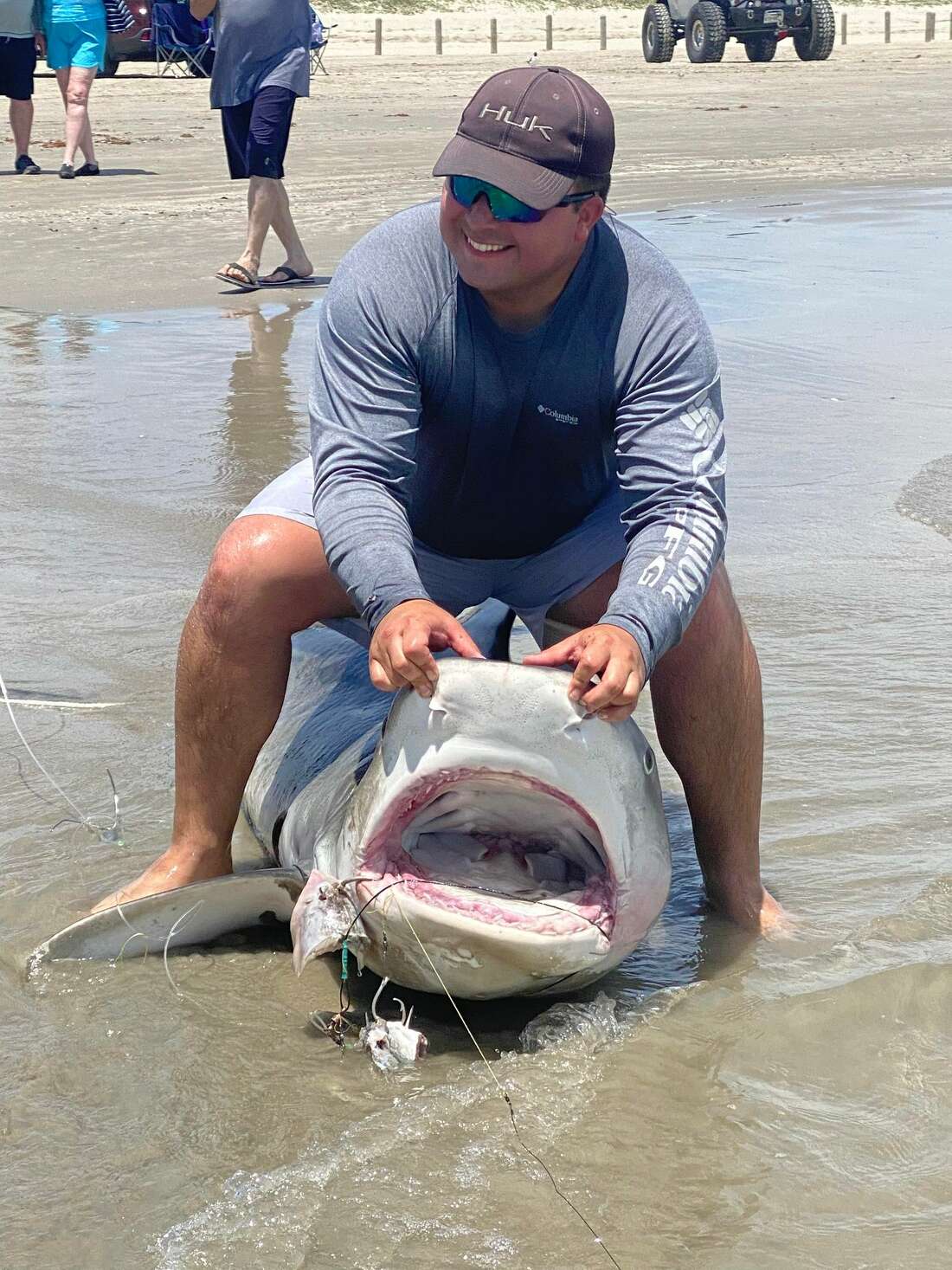
Texas Parks and Wildlife hunting regulations declare it is unlawful to “use aircraft (including drones, except by activity-specific permit) to hunt, locate (including wounded animals), manage, harass, drive, trap or photograph any wild animal.” Its fishing regulations, however, state that “Unmanned Aerial Vehicles (UAVs) and bait launchers are approved methods for the delivery of bait. Federal regulations apply.”
Indeed, drones are already regulated to some degree by the federal government. As of 2016, all drones (except those weighing less than half a pound) must be registered with a stamp from the Federal Aviation Administration. There are two types of registrations: recreational and commercial. The identification tags for both cost $5 and are valid for three years. Commercial use or anyone operating a drone for hire, sponsorship, or other business enterprises requires a license from the FAA following written and in-person tests. That license costs $200 once all requirements have been satisfied. Some people who’ve gone through the process compare it to getting a real estate license.
Commercial drone pilots especially, but recreational pilots as well, must follow a host of federal rules. They must observe airspace restrictions and closures around cities, airports, national parks, private lands, and more. You may not fly a drone over people or capture their likeness without their consent. You cannot fly at night or in inclement weather. All the serious drone operators I spoke to take these rules seriously and spend time familiarizing themselves with local regulations before sending up their UAV. Most try to only send up their drone when no one else is around (however, it’s easy to find news articles about folks operating drones in less-than-responsible ways).
Submersible Drones

The term “drone” isn’t limited to unmanned vehicles that fly the skies. A May 2022, video from popular YouTuber BlacktipH shows a group of anglers sending down a remote-controlled submersible drone with a camera over a WWI-era shipwreck to see what fish were lurking about. They returned the next day to catch mutton snapper off the wreck.
Underwater cameras have been around for decades now and have grown in popularity in recent years, especially in connection with ice fishing. I’ve used them and have enjoyed the intimate view of fish behavior and their interaction with various lures. But even a simple camera lens on a cable can be difficult to operate and covers limited water compared to an unmanned submersible with its own propulsion and stabilization. Could this be the next frontier in the debate over drones in fishing?
Drone Fishing Bans
North Carolina banned the use of drones for fishing along with hunting in 2014. Michigan did the same in 2015, and so did Oregon in 2016. In 2021, however, Montana’s Fish Wildlife and Parks Commission shelved a citizens’ proposal to ban drones for fishing, suggesting it was a solution seeking a problem—despite some controversies in Montana’s angling community surrounding people using UAVs to locate large trout on redds.
Many other states still operate in this gray area regarding drones, and fail to even address the matter in their fishing regs or legal statutes. I found two decent resources for relevant drone laws in each state, UAVCoach.com and Drone-Laws.com, though several state pages do not address hunting and fishing directly—likely because no such laws exist yet in those states.
Hawaii is not one of them. The state legislature took the issue head-on in their most recent session. Concerned that the use of drones for fishing was creating more discarded line and gear and adding an additional degree of chaos to already-crowded inshore waters, four Hawaiian senators introduced SB 2065 in January. It “prohibits the possession or use of unmanned aerial vehicles on, in, or near state marine waters for the purposes of fishing, unless permitted by the Department of Land and Natural Resources.” The rule carries a misdemeanor penalty of up to $10,000 and a year in jail.
In testimony supporting the bill, Suzanne Case, chairperson of the Hawaii Board of Land and Natural Resources Commission on Water Resources Management, said that the legislation was necessary now and in the future as drones increase in popularity and decrease in price.
“Drones allow shore fishers to deploy baited hooks farther offshore and more efficiently than traditional shore fishing methods,” Case said in her official statement. “This has resulted in increased interactions with protected species, such as monk seals and turtles, as well as increased user conflicts with boaters, swimmers, divers, surfers, kayakers, and other offshore ocean users. This also impacts human health and safety—people have reported becoming caught by lines in places shore casting cannot reach, boaters have reported concerns with braided line becoming entangled in propellers. Similarly, the use of drones has vastly expanded the footprint of fishing-related tackle becoming debris in the ocean. Drone use is on the rise, and we expect these impacts to also increase.”
Neither the Hawaiian angling community nor the legislative assembly was unified in opposition to drone fishing. One legislator, Rep. Sean Quinlan, who is (or was) a drone fisherman himself, said that responsible drone fishing can actually lead to “fewer fouled lines, less lost tackle—in short, less junk in the ocean. I would argue that if you are a responsible fisherman, drone fishing is better for the environment than traditional methods.” Some older anglers insisted that drones were a valuable way for them to continue fishing effectively with less effort and stress.
The bill went through several amendments and a conference between the two chambers of the legislature before receiving Gov. David Ige’s signature on June 27, 2022. The final language bans drones for the taking of any aquatic life, except under the terms of a permit that has yet to be codified. The law did create an exception for the purpose of simple reconnaissance.
“You’re Just Cheating”
Love it or hate it—aerial videography has become nearly synonymous with fishing media in recent years. I have to admit a certain fondness for watching massive taimen or pike or permit clobber a fly from directly above the action. Jako Lukas, Dan Favato, Paul Nicoletti, and many other talented pilot cinematographers have changed the game when it comes to what we get to witness in a fishing video.
Another one of those is Floridian Marissa Wil, a wildlife and fishing photographer specializing in drone and underwater imagery. She’s captured stunning vignettes of all manner of sea life from manatees to leatherback turtles and tarpon to hammerhead sharks—sometimes in the same frame. But she says that her use of drones derives more from a desire to better observe fish and wildlife without intruding on them.
“[It’s] a chance to see what the coast is like when we’re not disturbing it,” Wil says. “If we get in a boat, we’re going to make a lot of noise and commotion and probably drive off a lot of the wildlife that is actually there. Same thing if we go and dive. The drone is just great because it gives you a fantastic perspective of what is this area like, what’s happening here when [a fish or animal] believes it’s undisturbed. It’s a beautiful glimpse into what’s going on.”
She says the drone allows her to keep tabs on the sea turtle migration in the area without getting too close to protected reptiles. In similar fashion, drones have become popular with many research institutions and state fish and game agencies as well. UAVs are far cheaper and easier to operate than helicopters, while providing many of the same aerial counting and surveying capabilities. That’s a wonderful benefit for professional biologists and amateur naturalists alike.
“It helps you learn so much more about your environment, which makes you aware,” Wil says. “And then it makes you want to take care of it more because you enjoy what’s so easily at your fingertips and you want to preserve it.”
She typically flies drones at times or in places where there aren’t other people around, early in the morning or in remote areas. This is as much to follow the FAA rules surrounding drone use near people as it is to not affect other’s outdoor experience.
She says there are ways to use a drone that give its user an unfair advantage, especially dropping baits and locating fish. Wil would support legislation in Florida similar to Hawaii’s new law that regulates drone use related to fishing only for observation.
“Part of me feels like that’s cheating a lot,” Wil says of finding fish or presenting lures to them via drone. “You’re going out for that chase and you’re looking for [a fish] to tail or you’re looking for something to roll. And that’s just part of the excitement of the hunt. If you get rid of all of that by just launching a drone, you’re completely getting rid of the thrill of the chase and you’re just cheating.”
Fishing Drones vs. Hunting Drones
Angler and cinematographer Jay Siemens from Lake of the Woods, Ontario, has been remotely flying around to capture fishing experiences since about the time small, affordable camera rigs first became commercially available. He’s had the “drone discussion” many times.
“I’ve been flying drones since pretty early,” Siemens says. “I’ve gone through eight, probably nine—I’ve crashed my share of drones. I’ve learned my lessons and made my mistakes.”
Years later, those lessons have provided big value for his business making videos for tourism agencies, lodges, fishing companies, film tours, and his YouTube channel.
“I’m now able to get these amazing scenery shots and fish strikes and everything, when in the past you’d have to rent a helicopter, pay $1,500 an hour, have a pilot, and—talk about obnoxious,” he says, laughing. “The other option was for me to fly a drone; it just sounds like some mosquitoes buzzing around.”
When people question his use of drones, he points out that they’re simply another tool to help anglers catch fish.
“I have this conversation all the time when people are like, ‘Should you be using Livescope or should you be fishing with barbed hooks or should you be doing this and that?” Siemens says. “If you’re a fisherman, you love setting the hook and you’re putting a hook into a fish’s face. If you’re worried about the wellbeing of the fish and that’s above everything else, well, you shouldn’t be fishing. You should be snorkeling or scuba diving with them.”
He doesn’t hold the same reservations.
“I do like hooking them. I like tricking them, all that stuff,” Siemens says. “So for me, it’s just like at the bigger picture: Yes, Livescope is going to catch you more fish. Yes, using a drone is going to catch you more fish. But then we have to go back to the basics and make sure people are educated on fish handling. I’m trying to keep that fish out of the water less than 30 seconds, I’m trying to keep him in the net whenever I’m unhooking him. I’m trying to hold him in a way that isn’t compromising anything.”
It’s also fundamentally different than hunting for those reasons, he says: “I don’t think drones will ever be outlawed for fishing because at the end of the day, you still have the option to catch and release that fish. Drones and hunting, there’s no catch and release. You shoot the animal and the game’s over.”
Legislators seem to have identified this difference as well. Colorado passed its ban on the use of drones for hunting and scouting in 2013. Montana and North Carolina passed theirs in 2014. The movement spread, and an additional 14 states passed similar bans shortly thereafter.
Siemens doesn’t see any utility in placing baits or lures via drone, but there have been several times when he’s used a drone to locate fish when they were otherwise unable to. He saw that as a clever solution to a tricky angling problem.
“Most of my flying is out in the middle of nowhere or a fly-in fishing lodge, trying to get scenery shots,” he says. “But there are times, two times specifically, where [drones] have come in handy: redfish in Louisiana and pike in Northern Saskatchewan—just for those situations where seeing the fish is everything. And then you go over to the fish and are able to cast at it.”
But he says that finding the fish has, and always will be, only half the battle.
“It still takes a level of skill to fly a drone. At the end of the day, with all of this technology, I have seen fish on drone and on Livescope that I am not able to catch with live bait. They’re just not gonna bite. And you can’t force that fish to bite.”
He’s worried this fair-chase nuance between hunting and fishing in this context may be lost on some lawmakers and anglers. He doesn’t want to lose the privilege to operate his drone and share the vivid landscapes he travels to, but he is open to more, clearer boundaries being set on UAV use.
Tim Brass, field operations and state policy director for Backcountry Hunters and Anglers, was involved with many of the state efforts to ban drones for hunting and scouting. But he agrees that there are differences between hunting and fishing when it comes to this tech.
“While there’s maybe not as much of a fair chase history or movement with fishing as there is with hunting, I think ultimately it comes down to taking a look at why people are out in the field hunting or fishing,” Brass says. “I think the vast majority of folks are out there for connection to nature and to experience the challenge. [But] I think the line for fishing is maybe a little bit more nebulous than hunting at times.”
Plus, people’s opinions change as new technology becomes normalized.
“I have an uncle that has a Livescope,” Brass says. “He even believes that it’s cheating and should have been banned. But now he has one.”
